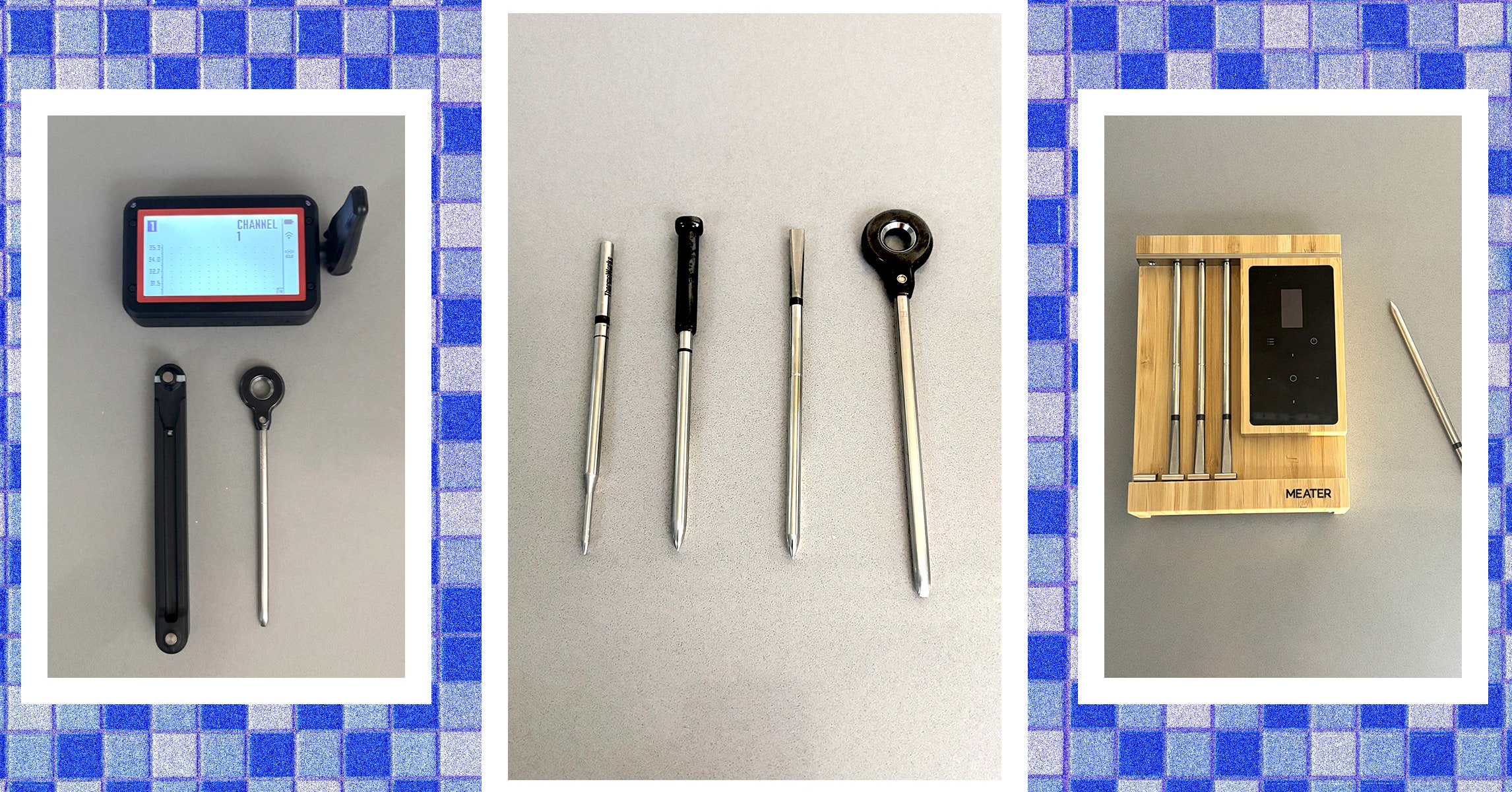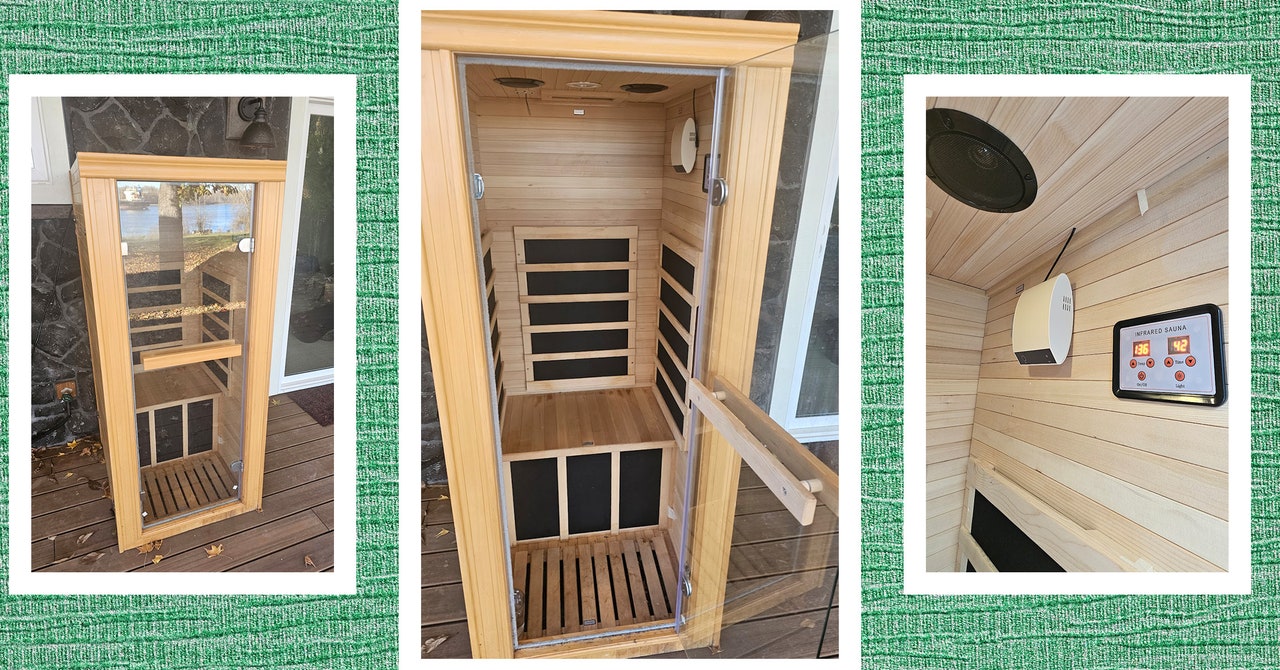
Lots of what goes into making an awesome meal—be it a Tuesday steak dinner or Thanksgiving—is your skill to handle temperatures. No quantity of chopped parsley or sprinkled fennel fronds can zhuzh up overcooked meat. (Although mayo can rescue a leftover turkey sandwich). And that’s simply the unpleasantness of chewing on leathery grocery store steaks, as a result of by chance tucking into uncooked rooster is extra severe. But solely about one in 4 adults say they use a thermometer usually when cooking proteins.
Wi-fi leave-in probes geared toward outdoor cooking, which have been out for years, battle with connectivity. These probes work … till you shut the oven door on a fowl, the lid on a pellet smoker barbecuing a brisket, or stroll away from that T-bone in your grill. That’s when the glitchy habits begins: dropped connections, requests to restore, timeouts, or temperatures that didn’t appear to maneuver. Some maintain a steady connection, however they are often fussy to work with, particularly for an beginner yard prepare dinner who may put them to work a few weekends a month. What good is a wi-fi probe with out the arrogance to stroll away from the range or smoker and take a nap inside whereas the collagen breaks down within the pork butt?
I spent just a few days testing these probes: utilizing the apps, checking responsiveness, and checking connectivity in my kitchen and the yard. Then I subjected them to the Ironman take a look at: placing the probes in a Staub cast-iron Dutch oven sitting in a Yoder pellet smoker (8/10, WIRED Recommends), some of the sturdy cookers available on the market, and checking whether or not they stayed linked. I additionally grilled steaks over glowing-hot charcoal to see if excessive warmth bothered the probes. Kamado cooker diehards don’t fret: Whereas ceramic grills have thicker partitions than any metallic smoker, metal is mostly harder for these frequencies to penetrate, so these probes ought to work along with your Big Green Egg too.
Try the WIREDs Gear crew’s different kitchen-related coverage, together with the Best Meal Kit Delivery Services, Best Meat Subscription Boxes, Best Grills, and Best Pizza Ovens.
Power up with unlimited access to WIRED. Get best-in-class reporting that is too vital to disregard for simply $2.50 $1 monthly for 1 12 months. Contains limitless digital entry and unique subscriber-only content material. Subscribe Today.
Can You Use These Probes When Grilling?
Sure. The probes can face up to temperatures of 800 to 1,000 levels Fahrenheit earlier than you threat damaging the sensors, which is often greater than the vitality generated by charcoal briquettes, which get hotter than a standard gasoline grill. There are some situations, like caveman cooking, the place the protein is sitting instantly on the coals, or utilizing an infrared gasoline grill, that could be dangerous for the probes as a result of this could expose them to temperatures increased than 1,000 levels, however for many each day cooking these probes will deal with no matter you throw at them.
What Is the Temperature Vary These Probes Observe?
Whereas the probes can face up to as much as 1,000 levels Fahrenheit, don’t anticipate to see readouts for a steak that’s reached 400 levels. Sensors buried within the meals usually observe temperatures from 14 to 212 levels Fahrenheit. You need to use probes to substantiate the freezer is buzzing at 0 levels Fahrenheit, the fridge is chilling at 40, and poultry reaches 165, which is simply in regards to the hottest inside temperature of the proteins you’re consuming. If the sensors in the primary a part of the probe get hotter than 212 levels Fahrenheit, you’ll obtain an alert to chill issues down. For instance, you possibly can’t drop the probe right into a vat of oil and use it as a deep-frying thermometer. A notification might imply a part of the probe is touching a metallic grill grate or is uncovered to ambient temperatures hotter than 212 levels, like in an air fryer.
The outlier is the ambient sensor on the butt finish of the probe. This particular sensor sits exterior of the meals, so it is designed to simply accept extra warmth than the primary probe as a result of it will get pounded with extra convection, conduction, and infrared vitality. Those that bake, roast, and barbecue at decrease temperatures for longer intervals are inclined to care extra about ambient temperature than those that grill sizzling and quick.
Can You Calibrate the Probes?
Not likely. Many of those probes have been checked by a lab for accuracy throughout the plus-or-minus vary they supply, which is often round 1 diploma. Should you suspect the accuracy of the probe is off, a fast option to verify it’s to submerge the tip in boiling water, which ought to learn 212 levels Fahrenheit (at sea level) after which into an ice water bath, which ought to learn 32 levels Fahrenheit (if you happen to keep away from touching a dice). If the probe’s studying is off by greater than the acknowledged vary, contact the producer.
If the Probes Have A number of Sensors, What Temperature Is Displayed on Your Smartphone?
The bottom temperature inside your meals. When you set your goal temperature, the probe tells you what the good studying is from inside your dinner. Whereas the app shows one quantity—a fowl’s eye view—most will let you dial in and see the temperature of particular person sensors throughout the probe, which will be useful for larger cuts like brisket or a rib roast. The temperature the ambient sensor reads isn’t factored into the show the thermometer exhibits.
Do All Probes Observe Ambient Temperatures?
Sure, however the accuracy of that particular studying varies, and numerous probes don’t all verify it the identical means. Most probes embrace an ambient sensor on the butt finish, designed to resist essentially the most warmth for the reason that air, frying oil, or within the case of sous vide, water, across the meals is hotter than the middle of no matter you’re cooking. ThermoWorks is the one system that tracks ambient temperature with a wired probe that plugs right into a base station.
The reasoning is the second regulation of thermodynamics: sticking a conductive, metallic probe into chilly meals pulls temperature away from the onboard ambient sensor as sizzling strikes to chilly. Past that, in a sizzling oven, that massive block of thermal mass (chilly meals) has a blanket of cooler temperature masking it, brought on by water evaporating off the floor. Sadly, the placement of the ambient sensor throughout the probe, sticking an inch or so exterior the meals, is in that deceptive zone that reads colder than the precise ambient temperature. To get round this, ThermoWorks makes use of a wired probe held by a spring clip that’s designed to relaxation on the oven rack or the grate of a grill or smoker close to the meals, however far sufficient away that it’s not selecting up the evaporation cooling. Ambient temperature monitoring is much less vital if you happen to’re cooking a steak or pork chop, however it’s one thing yard barbecuers pay a number of consideration to, as a result of the secret is low, constant warmth held over hours.
How Do You Stick a Probe Into the Meals?
Every probe shaft has a minimal insertion line marked on it. In follow, you bury about ¾ of the thermometer’s size within the meals so the primary sensors are shielded from the warmth. Purpose to relaxation the probe’s tip within the middle of the fattest a part of the meals, avoiding bones or pockets of gristle or fats, which may throw off the temperatures. With extra sensors, electronics, and a battery embedded within the probe, placement will be finicky in comparison with wired probes, which solely take readings from the tip. You may be capable of stick a wired probe right into a thick steak by way of the minimize’s prime, or at an angle, however that received’t work nicely with a wi-fi probe, which is often heavier, floppier, and wishes all of the shaft’s sensors submerged in meat to keep away from a excessive warmth alert. Wi-fi probes received’t work nicely in each state of affairs, like skinny rooster cutlets, slender sausages, or very delicate fish—these probes are wider in diameter than wired variations. It’s good follow to situate the probe so the tip, which frequently homes the ambient sensor, isn’t touching the grate or another metallic, which may give a false studying.
My course of for setting a probe begins by syncing it to my telephone’s app so I see the thermometer registers room temperature. Then I set the goal temperature on the app and double verify for low battery warnings. Lastly, I insert the probe into the thickest a part of the meals, ensuring the temperature modifications, which it ought to for the reason that protein is usually round 40 levels Fahrenheit out of the fridge. If there’s ever a query in regards to the probe working, you possibly can all the time grip or pinch alongside the probe, with clear arms and look forward to the temperature to tick up just a few levels on the app.
Are You Going to Want an App?
In most cases, consulting the smartphone app helps and could be required. Not all probes have a base station with a display screen, which implies you’ll want an app to regulate goal temperatures and obtain notifications. Some probes supply Apple Watch apps that deal with the fundamentals of speaking the present temperature.
Is This the Solely Thermometer You’ll Ever Want?
No. Wi-fi probe thermometers are possibility when roasting or searing indoors, or grilling or smoking exterior, and whereas they’re responsive, they aren’t a substitute for an instant-read thermometer that may present the temperature inside meals in a few seconds. Immediate-read thermometers are additionally thinner, so it’s simpler for them to temp issues like rooster tenders and wings.






